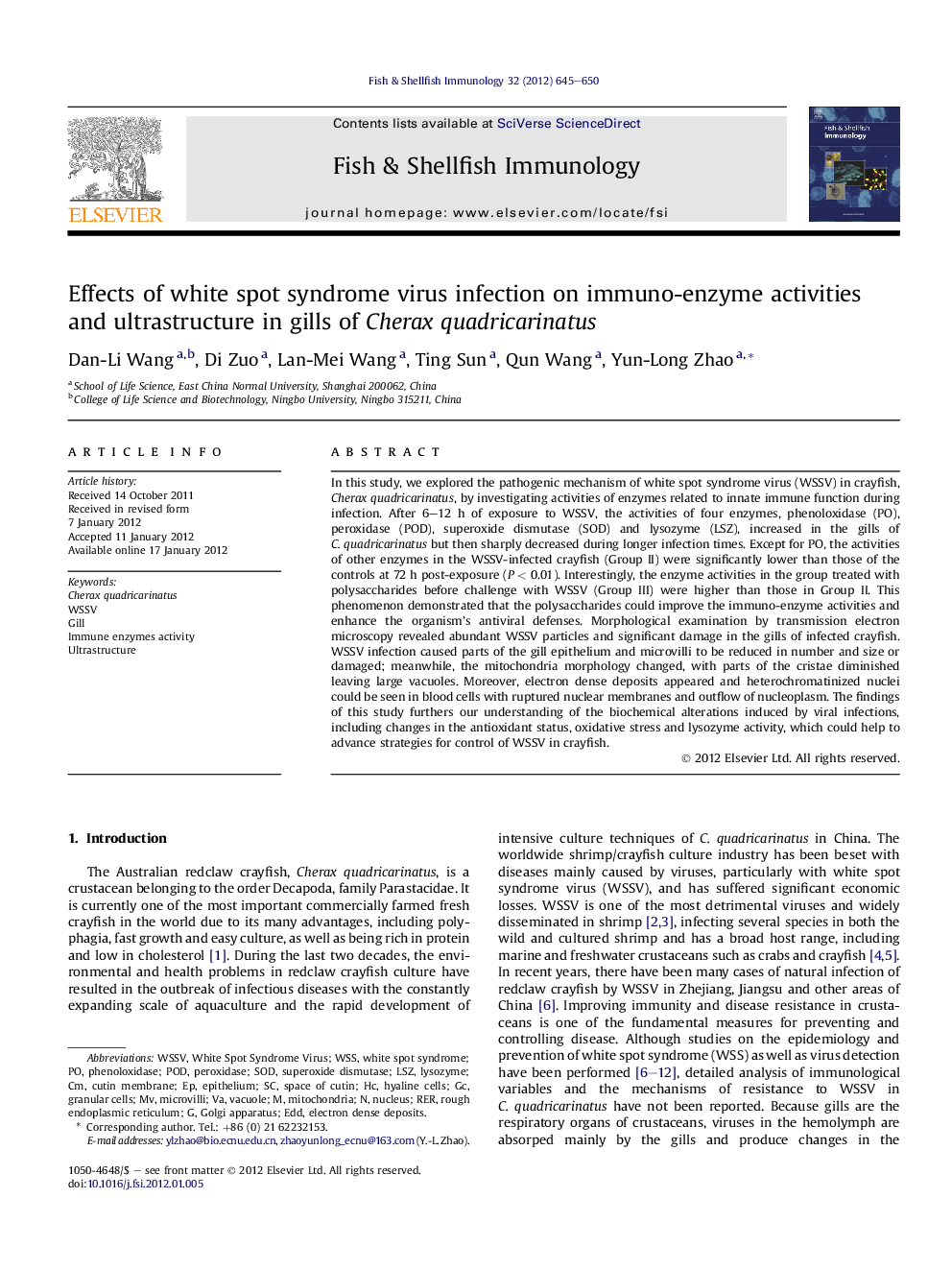| Article ID | Journal | Published Year | Pages | File Type |
|---|---|---|---|---|
| 2431978 | Fish & Shellfish Immunology | 2012 | 6 Pages |
In this study, we explored the pathogenic mechanism of white spot syndrome virus (WSSV) in crayfish, Cherax quadricarinatus, by investigating activities of enzymes related to innate immune function during infection. After 6–12 h of exposure to WSSV, the activities of four enzymes, phenoloxidase (PO), peroxidase (POD), superoxide dismutase (SOD) and lysozyme (LSZ), increased in the gills of C. quadricarinatus but then sharply decreased during longer infection times. Except for PO, the activities of other enzymes in the WSSV-infected crayfish (Group II) were significantly lower than those of the controls at 72 h post-exposure (P < 0.01). Interestingly, the enzyme activities in the group treated with polysaccharides before challenge with WSSV (Group III) were higher than those in Group II. This phenomenon demonstrated that the polysaccharides could improve the immuno-enzyme activities and enhance the organism’s antiviral defenses. Morphological examination by transmission electron microscopy revealed abundant WSSV particles and significant damage in the gills of infected crayfish. WSSV infection caused parts of the gill epithelium and microvilli to be reduced in number and size or damaged; meanwhile, the mitochondria morphology changed, with parts of the cristae diminished leaving large vacuoles. Moreover, electron dense deposits appeared and heterochromatinized nuclei could be seen in blood cells with ruptured nuclear membranes and outflow of nucleoplasm. The findings of this study furthers our understanding of the biochemical alterations induced by viral infections, including changes in the antioxidant status, oxidative stress and lysozyme activity, which could help to advance strategies for control of WSSV in crayfish.
► WSSV infection regulated immune-related enzymes in the gills of Cherax quadricarinatus. ► Immunization with polysaccharides enhanced WSSV-induced immune enzyme activities. ► WSSV infection damaged ultrastructure of gill epithelial cells and blood cells.
